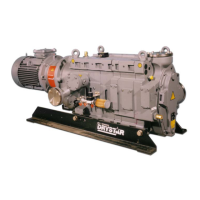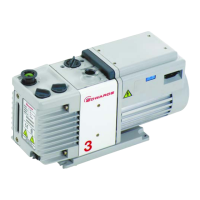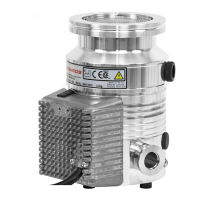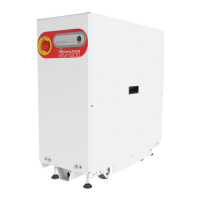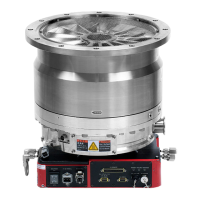than these limits, consider using an adaptor on the pump exhaust and a larger
diameter pipeline.
▪ For pumps running on dusty processes, we recommend that the exhaust line is
cleaned regularly as part of roune maintenance. Accumulaon of dust in the
exhaust line can reduce conductance and therefore increase exhaust pressure
which may damage the pump. The frequency of exhaust line cleaning depends on
the process. On very dusty applicaons, use a low-impedance inlet lter to reduce
maintenance requirements.
1. Referring to Figure: Connecng the pump inlet, remove the temporary cover or
blanking plate from the inlet of the dry pumping system. Take care not to drop
screws, tools and so forth into the pump inlet. Retain the nuts, bolts, washers and
blanking plate for future use. Retain the temporary cover for future use on
non‑contaminated pumps only. The inlet O‑ring is supplied with the pump, it is
ed underneath the inlet ange cover.
2.
Use the O-ring supplied and suitable nuts, bolts and washers (not supplied) to
connect the inlet ange (Figure: Front view of the pumping system with the side
exhaust and skids ed, item 5) to the vacuum system. The inlet ange is not
designed for use with a trapped O-ring or centring ring. Use our half claw clamps
when connecng an ISO style foreline ange to the dry pumping system inlet.
Refer to Figure: Connecng the pump inlet.
3. Use the trapped O-ring and clamp supplied to connect the exhaust outlet (Figure:
Front view of the pumping system with the side exhaust and skids ed, item 3 or
Figure: The controls/connectors on the rear of the pump (system with rear exhaust
and castors/levelling feet ed) item 20) to the exhaust extracon system.
Page 33
M58800880_H - Installaon
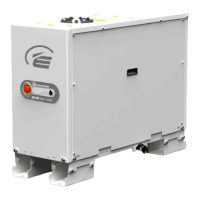
